Angulated screwdriver usage
1. Introduction
Right-angled drilling and screw driving instruments are an alternative to transbuccal systems.
In comparison to a transbuccal system, the use of a right-angled system means that transcutaneous incisions can be avoided. Thus, using a right-angled (90°) drill/screwdriver system via a strictly transoral approach is considered a less invasive procedure.
An endoscope or minicamera (or a small mirror) can be used to monitor the use of a drill/screwdriver in anatomical sites that are difficult to visualize.
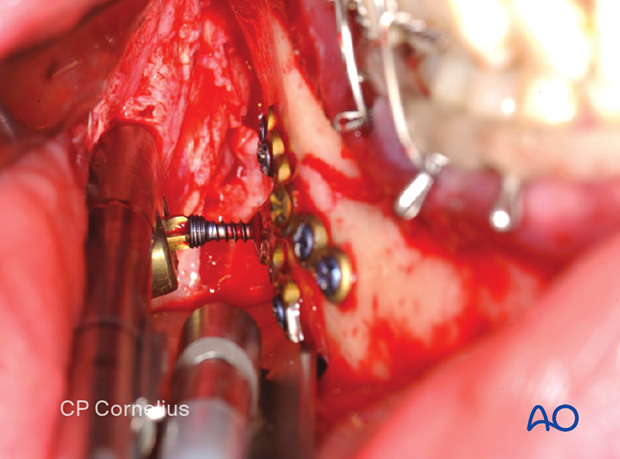
2. Principles
In principle, a 90° drill/screwdriver allows drilling and insertion of screws perpendicular to the bony surface through a transoral approach.
The drill/screwdriver is constructed of several main components:
- Handle
- Shaft
- Head
The driver’s shaft has a quick coupling connection to allow attachment of an electric motor or a handle for manual screw insertion.
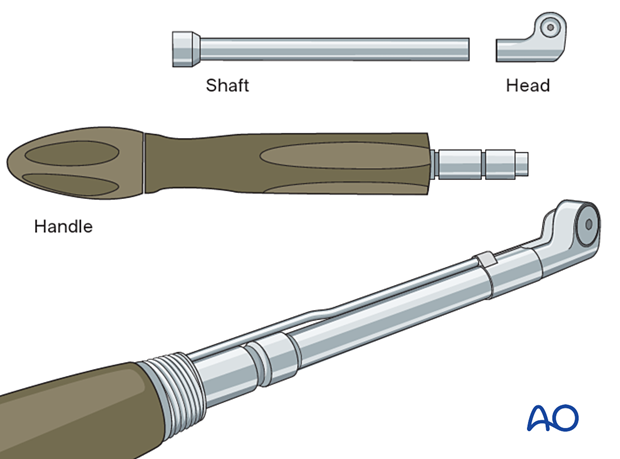
3. Screws
The most commonly used screw dimensions with 90° screwdrivers are 1.5 mm, 2.0 mm, and 2.4 mm.
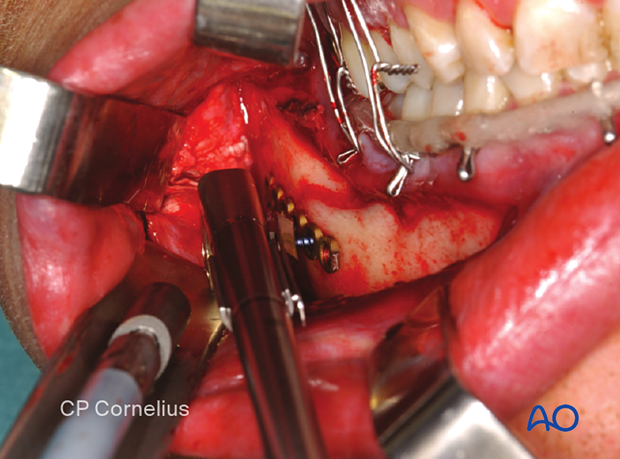
4. Inserts
The screwdriver tips and drill bits are inserted into the head of the shaft.
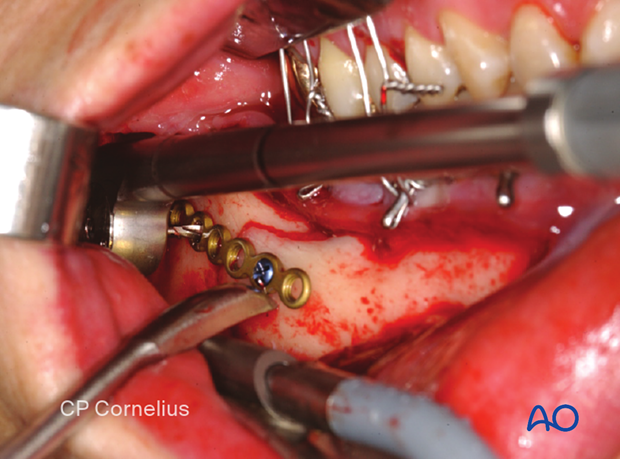
5. Indications
The indications for using a 90° drill/screwdriver are fractures extending into the lower border of the mandibular angle and the ascending ramus, including the caudal region of the condylar process (see illustration).
A 90° drill/screwdriver can also be used for plate fixation of sagittal split osteotomies.
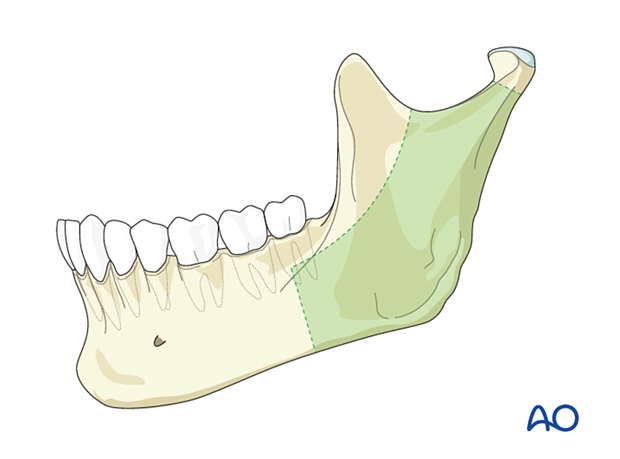
The illustration shows a typical application of an angled drill/screwdriver: plate fixation of a condylar fragment.
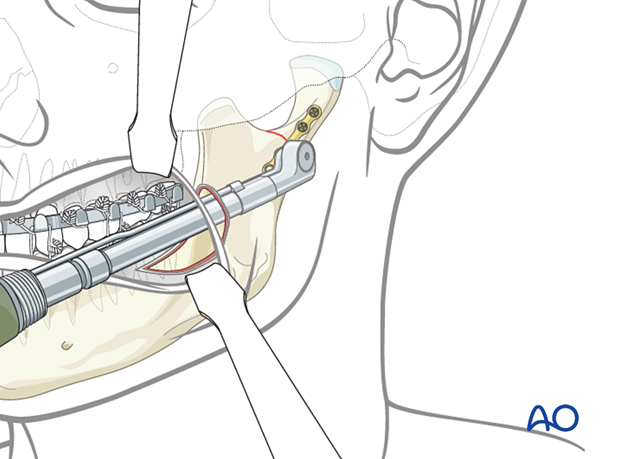
6. Pitfalls and backup strategies
Endoscopically assisted procedures, and the use of 90° drills and screwdrivers require a team effort and sufficient training before clinical use.
Limited space in the superior ramus region and relatively high torque requirements for screw insertion in the mandible are challenges for predrilling, plating, and screw insertion in these regions. Endoscopically assisted subcondylar fracture repair can be very complex and technically demanding.
If the planned procedure cannot be successfully performed, a backup strategy is mandatory and must be agreed upon with the patient in the informed consent form.
Keep a transbuccal set available as a backup.













